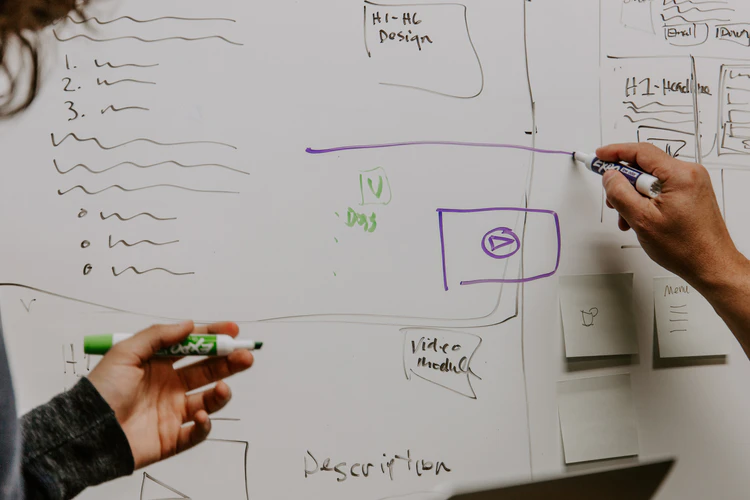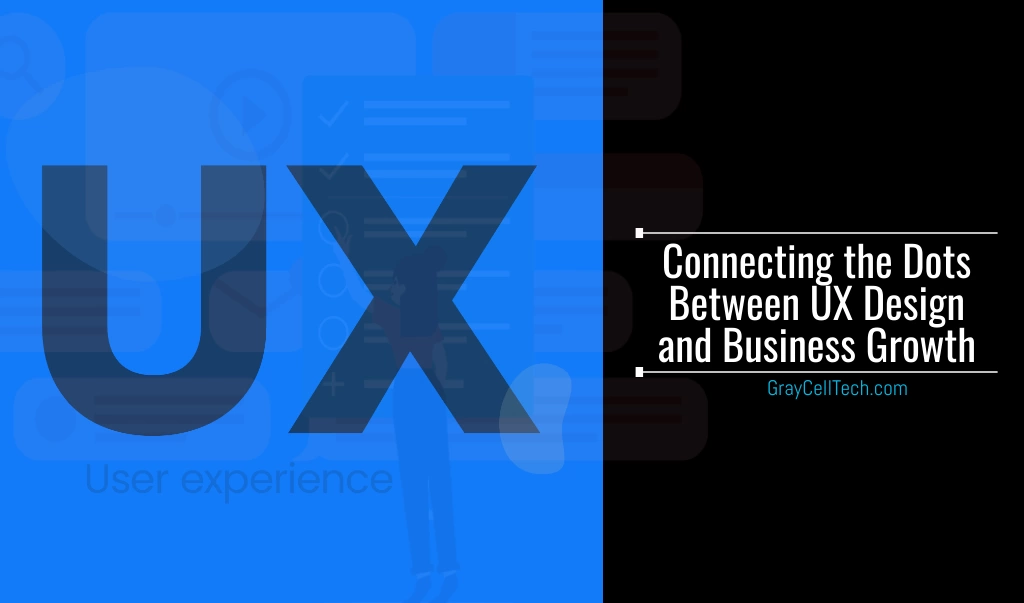In 2009, Airbnb was nearly a failure. The team saw zero growth in their start-up and was forced to push their credit card limit. Until one afternoon, the co-founder Joe Gebbia found the pattern of users’ comments, saying the photos on the site were awful. She then rented a camera and upgraded the low-quality photos.
It’s a turning point. A week later, their revenue doubled and has continued growing to billions per year until today. Airbnb has become a major success by understanding the user experience, and now it’s your turn.
This article will cover the definition, elements, and flow of UX design, as well as how it can significantly benefit your business.
What Is UX Design?

User experience design, also known as UX design or UXD, is the process of building digital products, like websites or apps, aiming to deliver a great experience to the users. It looks at the users’ behavior, patterns, and habits, so every step they take when navigating the product is meaningful.
Thus, UX designers don’t only care about visual design, but also many other aspects, like information architecture, users’ psychology, and market communication.
There are several things to consider when creating UX design.
- Usefulness: Is the core of UX design, determining whether the users think the product’s features help accomplish goals or solve problems.
- Usability: Make sure a user can easily complete a specific task with the product.
- Desirability: Refers to the visual design’s attractiveness.

The UX design process consists of:
Understanding. Researches the current product’s strengths and weaknesses by considering
- users from multiple backgrounds,
- the product’s main function,
- business goals and plan,
- other teams’ suggestions, such as customer support, engineering, and marketing.
- Ideating: Builds a solution and sketches ideas. Here, the designer will create a task flow to map the user’s journey.
- Prototyping and testing: Develops a prototype that has considered the navigation, interaction, and design. This step needs other teams and participants, including user interface (UI) designers, developers, and copywriters. After testing, the teams decide which elements to improve.
- Analyzing: Updates the features based on the testing results, then continues to the final design and launch.
The steps aren’t always linear because usually, the UX designers have to reassess previous stages.
10 Reasons Why UX Design Is Important for Business Growth
With the exact steps, UX design may take a lot of effort and budget. Yet, it’s a long-term investment as you can gain a long list of benefits. Here are the top ten reasons why you should pay attention to UX design for growing your business.
1. Saves Development Costs
Throughout the design process, UX designers will significantly reduce the development costs because they prevent products’ shortcomings in the first place by doing research.
Research at International Business Machines Corporation (IBM) found that fixing software defects after launching can be four to five times as costly as correcting mistakes during the development process.
Many people often prioritize speed over quality when trying to meet the launch dates. Yet, ignoring the flow and omitting some steps can result in more expenses. Make sure you conduct the research carefully and gather valuable feedback to avoid potential flaws.
Also, if you build the software for your employees, UX design will reduce the need for training or documentation because the system is already easy to use. They will just get started and figure out the features by themselves.
2. Reduces Production Time
Not only does UX design prevent further expenses, but it also decreases production time.
The UX designers take time to research the target users to better understand requirements and definitions for them. It will prevent the development team from building features that aren’t necessary and going back and forth to fix the errors.
There are several tips to speed up the design process without sacrificing quality.
- Create a vision. Use a storyboard or video to give the team’s purpose and clarity to the project.
- Control the endless feedback from stakeholders. Let them access the latest design presentations to avoid continuous meetings and prioritize real users’ biggest pain points based on your research.
- Standardize the workflow. Make an efficient system, like naming the files with specific templates or using the same tool to avoid juggling multiple software products, and stick with it.
3. Improves SEO
Back then, people could rank on Google by inputting as many keywords as possible–keyword stuffing. However, Google today involves UX for determining page rank by creating metrics called Core Web Vitals.
Three elements of core web vitals are:
- Largest Contentful Paint (LCP): Measures loading performance of a site. To provide the best user experience, keep the loading time within 2.5 seconds. Longer page load time will increase the bounce rate.
- First Input Delay (FID): Measures the sites’ responsiveness and interactivity, like click a link or tap on a button. Ensure the site mobile friendly and the links and buttons work.
- Cumulative Layout Shift (CLS): Ensure the site has a minimum unexpected layout shift. If you use animations and transitions, make it move gradually and naturally.
By improving the UX design to meet Google’s core web vitals, you will most likely increase your SEO quality and ranking.
Still, different sites’ purposes need different UX design tactics. For example, the news portals, like Time, show they have decreased their bounce rate after adopting infinite scroll.
4. Gains Web Traffic
Improving your SEO with UX design will finally bring more traffic to your site as it influences your search engine ranking’s success.
Building thoughtful UX helps make sure visitors will perceive the site positively, then encourage shares, bookmarks, and return visits. Those metrics contribute to high rankings and help Google see your site as high-quality.
5. Better Customer Satisfaction
In the digital world, people buy experiences, including through straightforward navigation and beautiful site design. Most people are willing to spend more money for businesses delivering excellent service.
More than 75 percent of them leave a site and continue searching on other websites if they aren’t satisfied, resulting in higher bounce rates that negatively affect the SEO ranking.
Better customer satisfaction will also increase positive reviews as users enjoying the UX will tell nine other people about it. Testimonials are powerful marketing strategies to encourage others to try your product since 91 percent of people seek recommendations before purchasing.
6. Builds User Retention
A good user experience not only makes customers satisfied but also increases their loyalty. Almost 90 percent of online consumers won’t return to a site that gave them a bad experience.
Also, App Store, Google Play, and search engines list retention rate as one of the vital metrics determining the website or application’s ranking. They prefer products that can engage users.
Design isn’t the only factor making users stay. A study reveals that user interfaces and experience may not directly affect customers’ loyalty. However, a great experience can be achieved by improving customization because customers can pick which option suits them best.
Thus, consider developing a personalized experience in your website or application. For example, Airbnb creates a geotargeting personalization to suggest accommodations near users’ location, and Amazon recommends products to its users based on their browsing history.
7. Allows Consistent Branding
Powerful brand identity is much more than a color palette and logo. Sure that determining your brand’s color palette will ensure consistency, however, you also need to make sure that you have a creative business name that quickly rings to get your brand to stand out from other companies in the same industry.
Better UX design also makes user interactions with the digital products simple and appealing and helps them spot the brand’s unique identity.
Here are the best tips to create a UX design that delivers consistent brand values.
- Find a balance between appearance and usability: Ensure the aesthetics don’t sacrifice usability. For example, high-quality photos often have a heavy size, leading to a longer loading time.
- Create unique design elements: Avoid a general-looking aesthetic by using personalized typography or special effects.
- Make your vision clear: A positive and relatable vision generates more loyal customers because they feel the connection.
8. Creates A Seamless User Journey
User journey refers to the steps users take from the beginning of a work process to the final result. UX designers can help businesses recognize and fix unnecessary steps during the user journey.
To track how users feel about it, apply Net Promoter Score (NPS), a survey asking how likely the users would recommend the product to a friend. Calculate the scores and see whether it reaches 44, indicating users are satisfied with the experience.
9. Increases Business Revenue
You’ve realized that UX design has improved many areas, including traffic and user retention. In the end, all of the items will add up to increased revenue. According to the UX Collective, every $1 spent on UX design will generate $2-100 in return.
Meanwhile, Baymard Institute shows that E-Commerce sales can expect a global loss of up to $1.420 for neglecting the UX during the checkout process. Almost 70 percent of the users abandon their carts for various reasons, such as the high extra costs and limited payment methods.
Yet, UX design can resolve most of the issues, such as:
- The site wanted users to make an account
- Complicated checkout process
- Users can’t see the total order cost up-front
- Website errors
This statistic proves that understanding user-centered design helps businesses reduce the users’ frustration cost and help users continue the checkout process smoothly.
10. Better Competition with Other Brands
Top UX designers help you stand out because they can find the gap between users’ pain points and the existing businesses. From their user research, see how you can scale up and fulfill the users’ problems.
For instance, other E-Commerce websites ask users to sign up for purchasing a product, which leads to more users abandoning their cart. As your UX designer sees this, you can solve the problem and make your eCommerce site more user-friendly.
When users are satisfied with the experience, they will be less likely to switch brands.
Yet, it’s essential to maintain satisfaction as PricewaterhouseCoopers (PwC) says customers will leave a brand they’ve loved after a single bad experience. Compared to satisfied users, those facing bad experiences tell more people about it.
What Does the UX Design Process Involve?
The UX process is the keystone of UX design. However, the process will depend on the type of digital product you’re designing because each project requires different approaches.
Despite the differences, here are five general elements that build a perfect UX process.
Information architecture (IA)
This component focuses on designing the website’s or application’s hierarchy that satisfies the business’s needs and provides easy navigation.
Interaction design
Interaction design visualizes the product’s design by considering all design elements, including the whitespace, motion, color, and how users interact with it. For instance, when they enter the sign-in page, UX designers think which process is easier for users: fade in or slide to the right.
Usability design
This element refers to a simple and easy-to-use design. To understand the pain points and users’ satisfaction, UX designers will conduct studies, including one-on-one interviews, A/B testing, and eye-tracking.
Prototyping 
A prototype refers to the realistic sample when UX designers have worked with the developers creating the backend of the product and making the design interfaces functional.
Before creating a prototype, there are several methods UX designers go through.
- Zoning: Is still a rough plan of the general organization of pages on the product. This step uses blocks to represent where each design element takes place.
- Wireframing: Means the UX designers define the basic shapes and elements on each block from the zoning process, so the content may still consist of lorem ipsum. This process also involves style tiles, a collection of visual elements for user interface design, such as color palette and typographic styles.
- Mockup: Gives a more realistic impression of the product result as it provides more visual details and demonstrates the basic functionalities.
Visual design
This component appeals to the product’s desirability using a suitable and coherent layout and other design components. Many beginners think great visual design only focuses on aesthetics and sacrifices usability, but the two are actually related.
Conclusion
There you have it–the thorough explanation of UX design from definition to process. Just like an age-old business mantra, “Customer is King,” develop a keen understanding of your user experience because it will bring you not only higher revenue but also other advantages, like more traffic and stronger branding.






